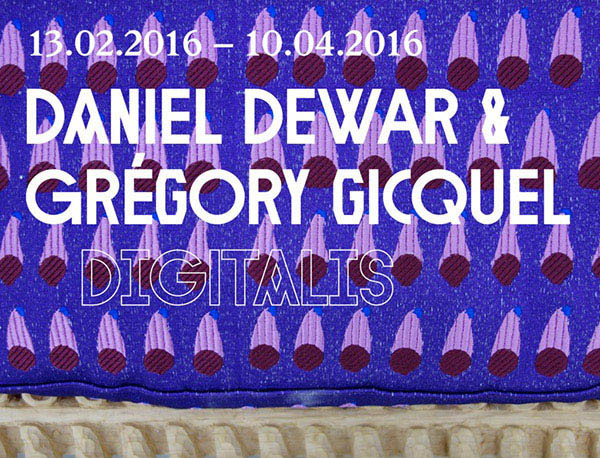Daniel Dewar and Grégory Gicquel: 'Digitalis'
13 Feb - 10 Apr 2016
At KIOSK, British-French artist duo Daniel Dewar and Grégory Gicquel bring together several new series of sculptures under the title 'Digitalis'.
In their sculptural practice, the artists use a wide array of techniques, including woodcarving, weaving, ceramics and stone carving. They employ this autodidactic knowledge of traditional methods of production in the creation of unique, handcrafted objects. This means that a sculpture on display is often the result of a long and labour-intensive process in which the material is carefully selected, researched and manipulated.
This is also the case for the sculptures that are created for 'Digitalis'. The exhibition’s title uses the botanical name for foxgloves; ‘digitalis’ meaning ‘of the finger’, a reference to the flower’s shape. Both the title and the works on display are concerned with the concept of the touch, or stroke; in the shape of a unique fingerprint or as a digital, serial gesture. The purple 'Digitalis' flower, for instance, reappears as a floral motif in the details of a new series of benches hand-made by the artists from cypress wood. The cushions for the seats are adorned with digital embroidery.
Dewar and Gicquel’s choice for obsolete manual techniques should not, however, be interpreted as a nostalgic reflex concerning forgotten traditions, or as a critical stand on standardization and uniformity in an industrialized world. Techniques and media are not a work’s final goals. On the contrary, most often they function as starting points for an investigation of the narrative potential, as references for the subject to freely revolve around.
The diminished relevance or anachronistic nature of, in this case, embroidery and the use of a chisel and mechanic wood cutter is seen by the artists themselves as sculptural surplus value. A block of wood starts with the potential to take on any narrative and sculptural form, but it is simultaneously inherent in the creative process that this starting material will only lead to a single sculptural ‘appearance’. Dewar and Gicquel take great pleasure in the journey towards this appearance, in manipulating techniques or setting a particular material in motion and, curiously yet patiently, watching the emergence of a sculptural image. Their take on traditional techniques does not require the rules to be followed strictly; no, new rules are invented along the way. This idea is strikingly embodied in the sofa-pieces: they do not function as perfectly finished practical objects, but as a series of unique sculptures with delicate nuances in material, colour, and size.
In their sculptural practice, the artists use a wide array of techniques, including woodcarving, weaving, ceramics and stone carving. They employ this autodidactic knowledge of traditional methods of production in the creation of unique, handcrafted objects. This means that a sculpture on display is often the result of a long and labour-intensive process in which the material is carefully selected, researched and manipulated.
This is also the case for the sculptures that are created for 'Digitalis'. The exhibition’s title uses the botanical name for foxgloves; ‘digitalis’ meaning ‘of the finger’, a reference to the flower’s shape. Both the title and the works on display are concerned with the concept of the touch, or stroke; in the shape of a unique fingerprint or as a digital, serial gesture. The purple 'Digitalis' flower, for instance, reappears as a floral motif in the details of a new series of benches hand-made by the artists from cypress wood. The cushions for the seats are adorned with digital embroidery.
Dewar and Gicquel’s choice for obsolete manual techniques should not, however, be interpreted as a nostalgic reflex concerning forgotten traditions, or as a critical stand on standardization and uniformity in an industrialized world. Techniques and media are not a work’s final goals. On the contrary, most often they function as starting points for an investigation of the narrative potential, as references for the subject to freely revolve around.
The diminished relevance or anachronistic nature of, in this case, embroidery and the use of a chisel and mechanic wood cutter is seen by the artists themselves as sculptural surplus value. A block of wood starts with the potential to take on any narrative and sculptural form, but it is simultaneously inherent in the creative process that this starting material will only lead to a single sculptural ‘appearance’. Dewar and Gicquel take great pleasure in the journey towards this appearance, in manipulating techniques or setting a particular material in motion and, curiously yet patiently, watching the emergence of a sculptural image. Their take on traditional techniques does not require the rules to be followed strictly; no, new rules are invented along the way. This idea is strikingly embodied in the sofa-pieces: they do not function as perfectly finished practical objects, but as a series of unique sculptures with delicate nuances in material, colour, and size.

